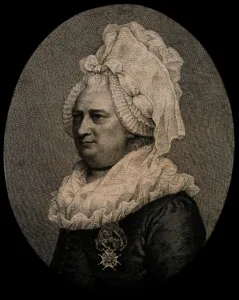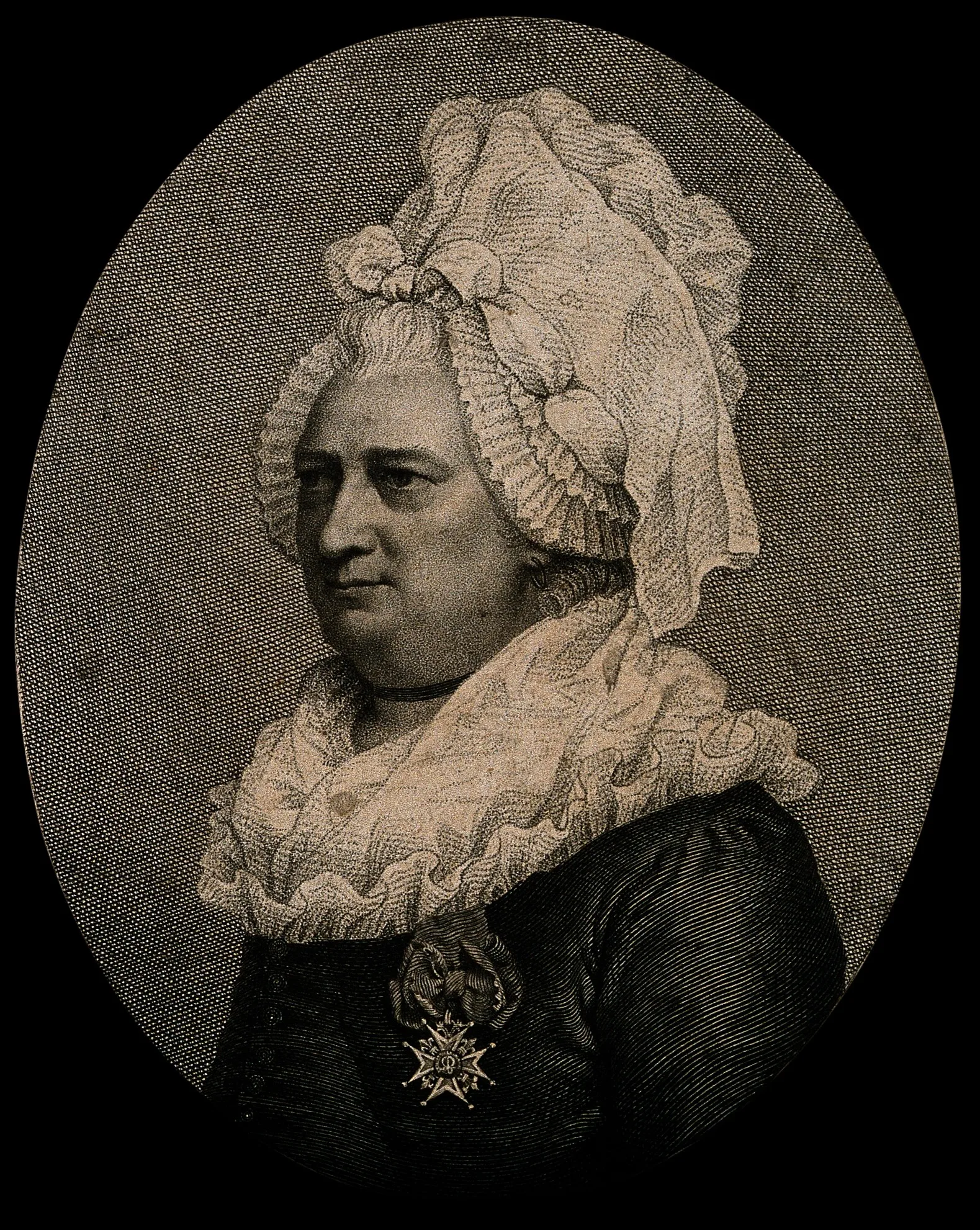Intro
The Chevalier D’Eon, born Charles D’Eon de Beaumont in 1728, was a multifaceted individual, serving as a French soldier, spy, and diplomat. Despite military achievements and diplomatic roles, D’Eon gained notoriety for gender speculation. Initially biologically male, he was legally declared female by French King Louis XVI and English courts, living the latter part of her life as a woman. The Chevalier’s intriguing life involved espionage, blackmailing kings, and controversies that extended beyond death.

The Enigmatic Life of Chevalier D’Eon: Espionage, Diplomacy, and Gender Controversy in 18th-Century France
Early Life and Literary Acclaim
Born into a noble family in Tonnerre, Burgundy, D’Eon embarked on a multifaceted journey. After earning a law degree from Collège Mazarin in 1749, the 21-year-old gained literary recognition through political writings.
Espionage and Diplomacy in Russia
In 1756, D’Eon joined the Secret du Roi, a spy network serving French King Louis XV. Sent to Russia officially as Secretary of the Embassy in St. Petersburg, D’Eon’s clandestine mission involved gathering intelligence in the court of Empress Elizabeth. The objective was to influence the Polish throne with a French candidate.
Metamorphosis Balls and Social Norms
During their time in Russia, Empress Elizabeth hosted “metamorphosis balls,” where courtiers cross-dressed. This practice was socially accepted in the medieval and early modern periods, providing a unique backdrop to D’Eon’s espionage activities. Cross-dressing at masquerade balls was a common social experience among the nobility.
Role in Franco-Russian Relations
While historical evidence is scarce, D’Eon later claimed to have served as a lady-in-waiting to Empress Elizabeth while disguised as a woman. Regardless of this assertion, D’Eon played a pivotal role in Franco-Russian relations by transporting confidential correspondence between King Louis XV and Empress Elizabeth.
Read Also: Why Does the US Have a Two-Party System? – Know More (kmore.info)
The Multifaceted Journey of the Chevalier D’Eon: From Military Valor to Diplomatic Prowess
Seven Years’ War and Military Service
In September 1756, Frederick the Great’s invasion of Saxony marked the beginning of the Seven Years’ War. D’Eon, serving as Captain of Dragoons, showcased bravery on the battlefield, earning a commendable reputation and sustaining wounds in the line of duty.
Diplomatic Ambitions and Russian Intrigue
In June 1763, D’Eon’s trajectory shifted as they were appointed ambassadors to Russia. However, these plans were thwarted by the assassination of Russian Emperor Peter III, leading to Catherine the Great’s assumption of power. This turn of events altered D’Eon’s diplomatic course.
D’Eon’s Diplomatic Role in Ending the War
Amidst mounting French debt, D’Eon was dispatched to London in September 1762 as part of the diplomatic team tasked with negotiating peace. The Treaty of Paris, signed on February 10, 1763, brought an end to the war. In recognition of D’Eon’s service, they received the prestigious Order of Saint-Louis, accompanied by a generous pension and the title of chevalier, symbolizing knighthood.
Diplomacy, Secret Missions, and Daring Blackmail: The Intriguing Saga of Chevalier D’Eon
D’Eon’s Diplomatic Role and Secret Mission
After the British victory, King Louis XV appointed the Chevalier D’Eon as Chargé d’Affaires and interim ambassador in London, aiming to restore France’s former glory. Alongside diplomatic duties, D’Eon was entrusted with a covert mission to identify locations for a potential sea invasion of England. Despite public proclamations of peace, the two Kings secretly pursued aggressive strategies. To integrate into British nobility circles, D’Eon hosted extravagant events, importing fine Burgundy wine and accumulating substantial bills.
Demotion and Defiant Stand
While relishing a luxurious lifestyle in London, D’Eon faced a demotion when the Comte de Guerchy replaced them. Demoted to secretary, D’Eon was ordered to leave London, a move that would endanger the secret invasion plans only they were aware of. Refusing to abandon the post, D’Eon argued that only the King could recall them, showcasing a significant ego and confidence in their abilities. The King, upon learning of D’Eon’s refusal, responded by freezing their pension, setting the stage for a tense confrontation.
Desperation and Daring Blackmail
Faced with increasing desperation, the Chevalier D’Eon, determined to maintain their position, resorted to a daring move—blackmail. This unexpected strategy was employed to secure their place and defy the King’s attempts to force them out. The decision to leverage potentially damaging information showcased D’Eon’s resourcefulness and determination in the face of political challenges.
The Chevalier D’Eon: Scandalous Revelations, Political Intrigue, and Delicate Diplomacy in 18th-Century Europe
The Scandalous Revelations of 1764
In 1764, the Chevalier D’Eon stirred London’s coffeehouses with the publication of “Lettres, mémoires et négociations particulières du chevalier D’Eon.” This scandalous work leaked private diplomatic correspondence, creating a buzz but carefully avoiding the exposure of the French spy network and the King’s plans to invade England.
Threatening Revelations and Political Intrigue
D’Eon, aware of the potential consequences, sent an extraordinary letter to the King, demanding a resolution in the affair with M. De Guerchy. The letter, essentially a veiled threat of war, hinted at D’Eon’s willingness to align with the King of England and sparked delicate negotiations. The King, treading carefully due to D’Eon’s popularity in London and influential connections, faced the challenge of resolving the situation without triggering a diplomatic crisis.
Treason and Delicate Diplomacy
D’Eon’s letter, though bordering on treason, presented a delicate situation for the King. The negotiations dragged on for over a decade, with the King having to navigate the intricate web of political alliances and D’Eon’s influential friendships. The death of Louis XV in 1774 added a new layer of uncertainty, leaving the resolution of D’Eon’s fate in the hands of the new monarch and raising questions about how the new king would handle this complex diplomatic affair.
The Chevalier D’Eon: Gender Controversy and Media Manipulation in Eighteenth-Century Europe
Gender Speculation in London: A Sensational Controversy Unfolds
Amidst the Chevalier D’Eon’s multifaceted life, rumours began circulating in London about their gender. Sensational broadsheets depicted a portrayal of D’Eon as a figure embodying both man and woman, adding to the intrigue. The London Stock Exchange even engaged in betting on the Chevalier’s gender. Instead of refuting the claims, D’Eon actively fueled the controversy, going to the extent of challenging a prominent banker to a duel.
Media Manipulation and Celebrity Status in London
As D’Eon faced a decline in favour of paymasters in France, they strategically began manipulating the press. Dr. Valerie Mainz, co-editor of “The Chevalier D’Eon and his Worlds: Gender, Espionage and Politics in the Eighteenth Century,” notes that D’Eon’s tactics involved leveraging the controversy to regain public attention. The publication of D’Eon’s book catapulted them into celebrity status in London, with the gender speculation making them a household name. The scandal even reached the ears of the King of France, who inquired about D’Eon’s gender in a letter to his general in 1770, highlighting the magnitude of the controversy that became too significant for the French government to overlook.
Escalating Scandal and French Government’s Response
As the speculation around D’Eon’s gender intensified, the scandal reached a point where it became too prominent for the French government to ignore. The controversy, initially a topic of public fascination, evolved into a matter that demanded official attention. The intriguing saga of the Chevalier D’Eon’s gender identity had far-reaching implications that extended beyond personal notoriety, prompting a response from the authorities in France.
The Chevalier D’Eon: Political Intrigues, Gender Transition, and The Transaction (1775)
Political Maneuvering and The Transaction (1775)
Louis XVI, facing political challenges and potential conflict with England, sought to secure the secrets held by D’Eon. In a strategic move, the King offered D’Eon a return to France, a substantial annuity, and legal recognition as a woman. This deal, known as The Transaction, aimed not only to preserve state secrets but also to politically sideline d’Eon, as women were not commonly involved in diplomacy.
Legal Recognition and Wardrobe Transformation
The legal proclamation of D’Eon as female was a crucial aspect of The Transaction. Louis XVI, believing in d’Eon’s inherent femininity, found it politically advantageous. This move, as historian Mainz notes, cleverly marginalized d’Eon from rising to power again in diplomatic circles. Despite the agreement, d’Eon initially continued to wear male attire, prompting the King to enlist Marie-Antoinette’s dressmaker, Rose Bertin, to create a feminine wardrobe. The transition, though politically motivated, proved challenging for d’Eon.
Struggles with Gender Transformation
D’Eon’s adjustment to the new female identity was far from easy. The process involved significant discomfort and challenges, as expressed in their own words. The pressure to conform to the predetermined standards of feminine elegance, as complained by d’Eon, reflected the difficulties faced during the gender transition. The transformation from a military figure to a noblewoman required sacrifices and adjustments that went beyond mere changes in attire.
D’Eon: A Gender-Defying Figure and Influencer in European Society
Public Recognition of d’Eon’s Gender Transition
France officially acknowledged d’Eon as a woman, and England followed suit in a highly publicized court case, drawing widespread attention to this extraordinary individual. Edmund Burke, in The Annual Register, praised d’Eon’s multifaceted talents, spanning military, political, and literary realms. Figures like Benjamin Franklin, Voltaire, and Rousseau sought d’Eon, making them prominent figures in European circles.
D’Eon’s Public Life and Celebrity Status
D’Eon’s gender transition was not a private affair; instead, they embraced a public life as a woman from age 49 to 82, becoming a celebrated public figure. Seeking acceptance, d’Eon crafted narratives for the European public. They claimed to have been born female but were compelled by their father to conceal their gender for inheritance. D’Eon asserted that dressing as a man was a strategic choice to bring glory to France as a diplomat and soldier. This public display aimed to establish d’Eon as a model for strong women, aligning with the tradition of the femme forte, which included historical figures like Joan of Arc and the Amazons praised by Herodotus.
D’Eon’s Influence on Feminist Thought
Mary Wollstonecraft, an early feminist, highlighted d’Eon in The Vindication of The Rights of Woman as an exemplar of what women could achieve with equal access to education. D’Eon’s life served as a testament to the possibilities for women when provided the same opportunities for education and training as men. In the eyes of Wollstonecraft and her contemporaries, d’Eon became a symbol of the potential inherent in gender equality.
The Enigmatic Life of Chevalier D’Eon: Gender, Revolution, and Legacy
Post-Revolution Struggles and Dressing Freedom
Following the French Revolution and the execution of King Louis XVI, d’Eon faced the seizure of their family estate and the nullification of the transaction. Without a pension or home, d’Eon was legally free to dress as they pleased, choosing to exclusively adopt women’s attire for the last 33 years of their life. In London, financial support came through fencing in women’s clothing.
Unrealized Military Leadership and Spiritual Transformation
During the American Revolution, when France allied with the colonists in 1778, d’Eon offered to lead an army of women, a proposal that was ultimately declined. As time progressed, d’Eon became increasingly religious and embarked on writing memoirs, expressing the profound impact of their transformation on both body and soul.
The Final Days and Public Perception
D’Eon’s life took a turn for the worse, dying in poverty on May 21, 1810. The discovery of their biologically male body by Mrs Cole, a roommate of 14 years, shocked observers. The press portrayed d’Eon as a great con artist, dominating 19th-century discourse. However, evolving views on sexuality later repositioned d’Eon as a figure exploring gender identity, contributing to their recognition as a founding figure in the transgender community in modern media and pop culture.
Sources:
https://www.britishmuseum.org/collection/desire-love-and-identity/chevalier-deon
https://www.npg.org.uk/collections/research/new-research-on-the-collection/the-chevalier-deon.php

I discovered this brilliant website earlier this week, they provide awesome content for their audience. The site owner works hard to educate followers. I’m thrilled and hope they keep up their great service.
😊 thanks…means a lot